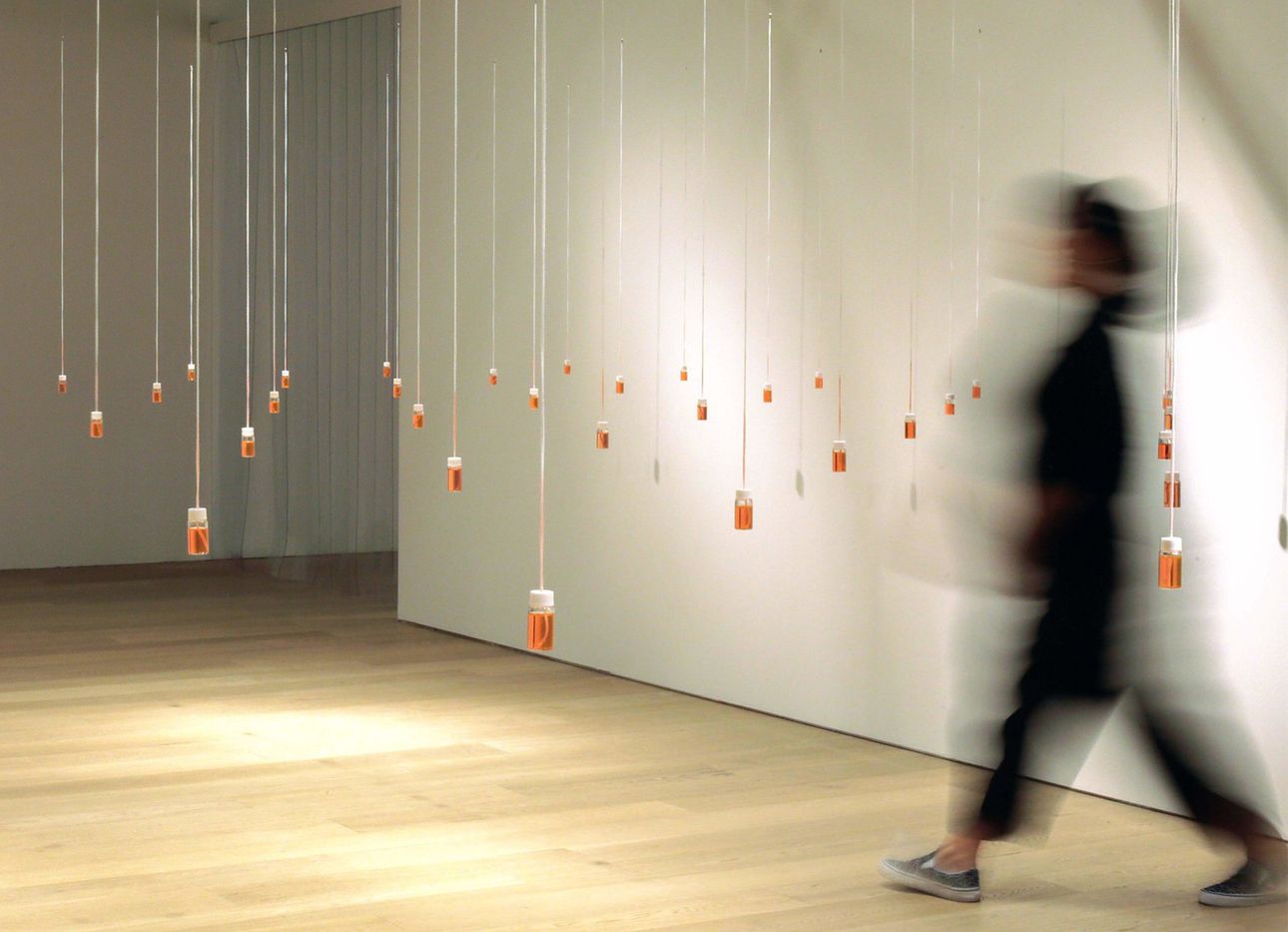
“Olfactory Labyrinths” That Zero In on the Remarkable Act of Smelling
Walking through a museum, you’ll likely consume most artworks using your eyes. Enjoying the output of olfactory artist Maki Ueda, who uses scent as her primary medium, however, requires your nose—and sometimes takes place in spaces with no visual stimulation whatsoever. Ueda, who is based in Okinawa and Tokyo, intentionally minimizes the influence of other senses as a way of helping viewers pay more attention to the remarkable act of smelling, and its deep connections with movement and space.
Ueda’s interest in scent developed while she was living in the Netherlands, where, since 2009, she has taught courses on olfactory art at the ArtScience Interfaculty of The Royal Academy of Art and the Royal Conservatoire. “I had to communicate in more or less nonverbal ways with others, because I didn’t know any language there,” she says. This period in her life also included the birth of her child, who, she noticed, instinctively used his sense of smell to detect breast milk.
These experiences inspired Ueda to explore fragrance in her art, beginning with small, experimental works centered around scent extraction and preservation. They included “Aromascape of Singapore” (2011), a workshop and corresponding exhibition that unpacked the distinct olfactory landscape of the country and presented its components as individual smells as emotion- and imagination-provoking perfumes. Soon, her practice expanded into scent deconstruction and reconstruction, as with “Olfactoscape Ver. 3” (2019), which broke down the smell of a rose into its individual aroma-chemical parts and dispersed them around an empty tent for visitors to explore with their noses; and around scent-driven communication, apparent in “Kyoto Love Story” (2015), a multisensory installation inspired by The Tale of Genji, a seminal piece of Japanese literature.
Among Ueda’s most compelling bodies of work is her “Olfactory Labyrinths,” an ongoing series of mazelike installations, first introduced in 2013, that create fields of scents that people physically move through. They range from a literal maze, navigated by following the trail of a specific smell, to a room filled with a grid of small bottles hanging from the ceiling that visitors are invited to sniff, seeking out the source of the vessels that hold the delicate aroma of sakura blossoms. “These projects invite viewers to observe how they perceive through smell,” Ueda says, “and how their sense of smell works, and how their recognition of smell works.”
Ueda’s most recent efforts have leaned into a new direction: using scent to address current and political events. Last year at Germany’s Städtische Galerie Bremen, she presented the exhibition “Viral Parfum,” for which she developed a series of fragrances, each based on Covid-19 and its mutations, that visitors could spray anywhere in the room. Occasionally the lights would dim, and black lights would switch on, illuminating the sprayed scents on the walls and helping visitors visualize how a virus spreads in an environment. Her installation “Smells for the Paris Agreement” (2020) explored whether certain scents can make a person’s body feel warmer or cooler, and how they might be used to help humans gain resilience in the midst of extreme temperatures. (Ueda consulted Jas Brooks, a Ph.D. student in the department of computer science at the University of Chicago, while developing the project.) It invited visitors to take in a group of aromatic substances—including menthol, thymol, black pepper, and red chili extract—and reflect on the warming or cooling physical sensations they felt.
Ultimately, Ueda hopes that her works create neutral spaces where viewers can zero in on their sense of smell. “Smell is a medium that is different from other senses,” she says. “Objective opinions are less important and subjective opinions are respected. Because our sense of smell is built in more or less the same way, we can find a common language there.”